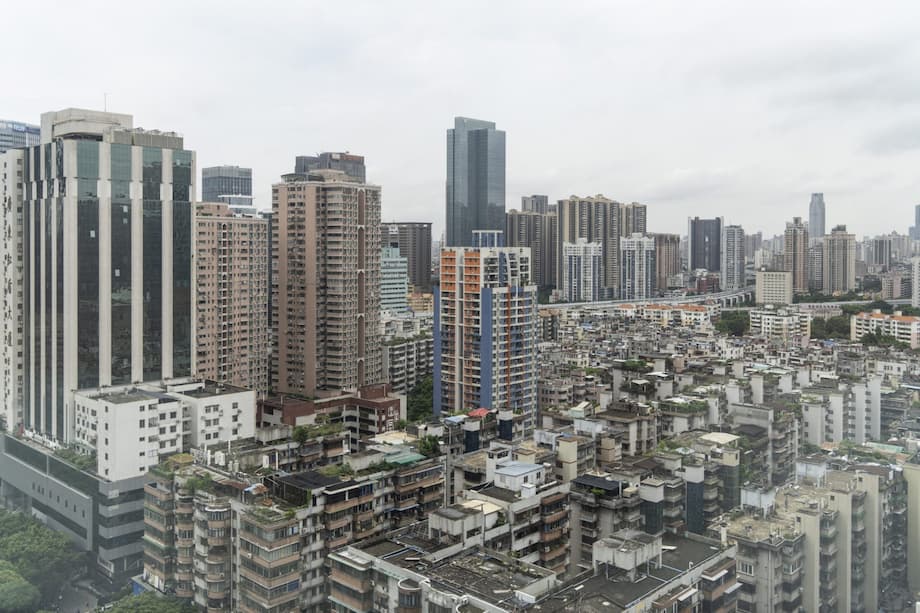Fresh signs of stress in August
China’s housing slump extended in August, underscoring how falling prices and piecemeal policy support have yet to revive buyer confidence. Preliminary figures from China Real Estate Information Corp show new home sales at the 100 largest developers reached 207 billion yuan in August, down 17.6 percent from a year earlier and marking a sixth straight monthly decline. The August slide followed a steep drop in July, when sales fell 24 percent from a year earlier. Weakness has persisted even as the country’s biggest cities eased home purchase rules and mortgages became cheaper.
- Fresh signs of stress in August
- How deep is the downturn?
- Prices are sliding even with discounts
- What is holding buyers back?
- Policy steps and their early impact
- Are there signs of stabilization?
- Developers, debt and consolidation
- Why it matters for the wider economy
- What could restore confidence
- The Essentials
Price declines have continued alongside the sales retreat. National Bureau of Statistics data for July showed new home prices fell 0.3 percent from June, matching June’s monthly drop and extending a long run of year on year declines. The persistence of price softness, combined with slack sales and cautious household spending, has raised renewed concern about deflation risks and the durability of China’s post pandemic recovery.
Authorities in Beijing and Shanghai announced fresh steps in August to loosen purchase restrictions and reduce the cost of buying. Analysts welcomed the moves as directionally supportive, yet the consensus view is that policy support remains incremental. The changes have had localized effects, especially in higher tier cities, but have not yet sparked a broad, sustained rebound in demand across the country.
How deep is the downturn?
The scale of the property reset is stark when viewed against recent history. Bloomberg tallied July sales by the 100 largest developers at 211.2 billion yuan, a drop of nearly a quarter from a year earlier and a fall of 38 percent from June. Compared with the market peak in mid 2021, monthly housing sales nationwide are now less than half, according to academic analysis, while real estate development has fallen by about a third and housing starts have shrunk by roughly two thirds. These are levels associated with the most severe housing corrections seen internationally in recent decades.
Price indices tell a similar story. ING estimates that from the national peak, new home prices are down around 10.7 percent, while used home prices have fallen about 18.8 percent. Only a handful of the 70 tracked cities recorded any monthly improvement in July. The widespread nature of the declines is critical, because a credible price floor is often a prerequisite for a durable sales recovery in markets where housing accounts for a large share of household wealth.
Even with the weak sales base of recent years, the downtrend has endured through 2025. The bottom in activity remains elusive in lower tier cities, where population pressures and surplus supply weigh most heavily. A ratings agency assessment characterizes the market as polarised, with state backed builders and top tier locations showing more resilience, while many private developers and smaller cities struggle with funding access and weak demand.
Prices are sliding even with discounts
Recent price data show steady month on month declines and a slow reduction in annual drops in some major cities. In July, 60 of 70 cities reported monthly price declines, according to Reuters calculations based on official statistics. Annual declines narrowed modestly, with new home prices down 2.8 percent year on year in July compared with a 3.2 percent annual drop in June. The picture varies by city tier. First tier cities saw the pace of falls ease slightly, and Shanghai even notched a small monthly gain, while many second and third tier cities continued to see broader price pressure.
The existing homes market has also been under pressure. Resale prices dropped further on both monthly and annual bases in July, with the declines narrowing in some smaller cities but widening in parts of the top tier. The persistent slide in second hand prices matters because it shapes expectations for future values and affects the trade up market. When households expect further declines, they often delay purchases, which dampens primary market sales and construction activity.
Price declines have already stretched over two years on a year on year basis, which has reshaped how households think about housing as a store of value. Many buyers now prioritize ready to move in units from developers seen as financially sound, even if that means paying a premium compared with presale units under construction. That shift has channeled demand toward state owned builders and completed projects, deepening the divide across the industry.
What is holding buyers back?
Confidence is the binding constraint. International institutions and market economists point to two sources of hesitation: fear of non delivery in the presale model and concern that prices will keep falling. The International Monetary Fund has highlighted how buyer doubts about developer financing can suppress sales, since presales historically accounted for a large share of transactions. That concern took root after high profile developer defaults in recent years, which left some presold projects delayed and households wary of committing funds up front.
Broader economic uncertainty has also weighed on household sentiment. Youth unemployment, a soft labor market in some sectors, and a desire to rebuild savings after the pandemic have pushed many families to delay large purchases. Housing carries outsized importance for Chinese households, which hold a large share of their wealth in property. When confidence in housing weakens, households tend to spend less across the board, which feeds back into slower growth and reinforces caution.
Demographics add a structural drag. Goldman Sachs estimates that demand for new homes in urban areas could remain at roughly one quarter of the 2017 peak of about 20 million units per year in the coming years, given a shrinking population and slower urbanization. China’s population has begun to contract and age, fertility has fallen despite incentives, and many school districts have reduced enrollment linked pressures that previously supported premiums on school adjacent homes. These forces point to a smaller housing market even if cyclical confidence improves.
Policy steps and their early impact
Officials have taken numerous steps since late 2023 to stabilize the sector. Mortgage rates and down payment requirements have moved lower, purchase restrictions have been relaxed in many cities, and banks have been encouraged to support a list of approved projects to ensure delivery. Local governments have been allowed to use special purpose bonds to help absorb excess inventory, including conversions to public or subsidized housing. Policymakers have also encouraged faster urban renovation, which can create demand for replacement housing and upgrades.
Some of these measures have had visible local effects. After Shanghai loosened rules late in August, new home transactions rose more than 35 percent in the following week, while inquiries for both new and existing homes jumped, according to multiple industry trackers. Analysts in the city said the package lowered the threshold for purchases and improved credit conditions for would be buyers, leading previously hesitant clients to act more quickly.
Lu Wenxi, an analyst at Centaline Shanghai, described how sentiment improved after the policy shift. He said potential buyers who had been on the sidelines began to make decisions as financing became cheaper and restrictions eased. He added that sales momentum was strongest in mid to high price segments, pulling average prices higher in the week following the announcement.
Calls for a more comprehensive nationwide package continue. Local measures can boost activity in target areas, yet many analysts argue that confidence will not return broadly without a clearer floor on prices and a program capable of addressing legacy debt, delivery of presold homes, and the large stock of unsold units.
Yuhan Zhang, Principal Economist at The Conference Board’s China Center, said measures that reduce inventory and improve execution could set a baseline for the market to stabilize if implemented well.
Urban renewal initiatives and large scale public housing procurement could help establish a stable baseline for the sector, provided these policies are executed effectively.
ING analysts stress that price stabilization is central to restoring consumer psychology. The firm notes that many households will not loosen their purse strings until they sense that housing values have steadied.
Establishing a trough on prices is one of the most important factors to restoring confidence and generating a sustained consumption recovery.
Are there signs of stabilization?
Forecasts have brightened at the margin, though the improvement is fragile and uneven. Fitch Ratings recently revised its view on the 2025 sales decline to a smaller contraction than previously expected, citing a better than expected first half and ongoing policy support. Analysts at HSBC flagged five early indicators that point to progress: improving access to credit for stronger developers, faster consolidation, gradual inventory clearance, firmer land auction results in select areas, and more market oriented pricing in top cities. Market share has continued to shift toward state owned builders, a change that many investors see as supportive for delivery and stability.
Independent commentators also find hints of stabilization. Yicai Global, citing official data, reported that the fall in new residential sales has slowed significantly from early 2024, helped by improved affordability as incomes rose and prices eased. Lower mortgage rates and relaxed eligibility rules have widened the buyer pool. Existing home transactions in a sample of large cities picked up year on year, with lower prices drawing more bargain seekers.
Even so, headwinds remain strong. Housing starts are still far below previous years, inventory remains high in many localities, and developers continue to face tight cash flow. Gains evident in a handful of large cities have not yet spread widely to smaller ones. The market’s polarised nature means headline data can mask sharper stress in lower tier areas where population decline and weak job growth bite hardest.
Developers, debt and consolidation
The developer landscape has been transformed. Most large private builders have defaulted or are restructuring debt, and market share has shifted to state backed companies that buyers perceive as safer. The delisting of China Evergrande from the Hong Kong stock exchange in late August, after a liquidation order in early 2024, marked an end point for the firm that once led national sales. Evergrande carried more than 300 billion dollars in liabilities at its peak and became a symbol of the risks embedded in the sector’s high growth, high leverage model.
The fallout extends beyond any single company. Projects across the country have faced delays, and buyers have prioritized finished units or those from stronger sponsors. Authorities have pushed local governments and state firms to help ensure delivery of pre sold homes and to acquire some unsold inventory where feasible. The consolidation trend likely has more room to run, with state linked builders expected to play a larger role in completing projects and stabilizing construction activity.
Local government finances add another layer of complexity. During the boom, land sales and property related taxes generated major shares of local revenue. As developer balance sheets deteriorated, land auctions slowed and proceeds shrank, squeezing budgets and curbing public investment. Analysts argue that without stronger central support or new revenue sources, many localities will struggle to purchase large volumes of unsold housing or underwrite extensive redevelopment, which limits the scope for inventory absorption.
Why it matters for the wider economy
Housing’s footprint in China’s economy is large. Direct real estate activity plus indirect linkages in construction materials, appliances, furnishings, and services have historically contributed a significant share of gross domestic product. When home sales and prices drop, households tend to reduce spending and firms cut investment. The latest cycle has coincided with very low consumer inflation, negative producer prices, and a falling GDP deflator over several quarters, all consistent with weak domestic demand.
Confidence effects are a key transmission channel. With a large portion of urban household wealth tied up in property, declining values can make consumers feel less secure, which depresses discretionary purchases. Private investment also weakens when developers reduce building and suppliers face excess capacity. Foreign direct investment has slowed, and portfolio investors have been cautious toward China exposure sensitive to domestic demand.
There are global reverberations. Excess capacity in materials and manufactured goods linked to construction can spill into export markets, potentially intensifying trade frictions. At the same time, slower Chinese demand for commodities can affect global prices and producer economies. Banks in China have so far avoided a severe hit to capital thanks to regulatory forbearance, but the longer the adjustment lasts, the greater the pressure to recognize losses and resolve nonperforming loans.
What could restore confidence
International experience suggests that clearing bad assets, ensuring project delivery, and letting prices adjust more freely often mark the turning point in housing downturns. The IMF has argued that faster restructuring of insolvent developers, removal of rules that delay recognition of bad loans, and stronger protections for homebuyers would help the market find a new equilibrium. Clear procedures for finishing presold homes can give buyers confidence to return to the market, while disciplined support for viable developers can preserve capacity without prolonging weak firms’ survival.
An IMF staff note outlined steps that could shorten the adjustment while protecting households. The note highlighted the need for banking rules that reflect reality, a steady pipeline of funding for projects that are deliverable, and better safeguards for buyers’ presale funds.
Rules allowing banks to avoid recognition of bad loans to developers should be phased out.
Consumer protection and confidence directly tie to delivery risk.
Insuring homebuyers against the risk that developers fail to complete purchased homes could help restore confidence and ease sales pressures for developers.
Longer term reforms could also help reduce the economy’s reliance on housing as a savings vehicle. A nationwide property tax, deeper capital markets that offer households more investment options, and stronger pensions could gradually shift savings away from real estate. Fiscal reforms that reduce local governments’ dependence on land sales would align incentives toward sustainable urban development rather than volume driven expansion.
Near term, execution will matter as much as design. Urban renovation and public housing purchases can absorb some inventory if funded adequately and targeted at areas of genuine need. Measures that expand the availability of completed homes for sale, such as pilot programs to sell finished units rather than presales, address the specific fear that has kept many buyers waiting. Clear, consistent communication from policymakers can help anchor expectations around a realistic price floor, which is central to reviving transactions.
The Essentials
- August sales by the 100 largest developers fell to 207 billion yuan, down 17.6 percent year on year, extending a six month slide.
- New home prices dropped 0.3 percent month on month in July, with 60 of 70 cities recording declines and annual drops still widespread.
- From the peak, national new home prices are down about 10.7 percent and used home prices about 18.8 percent, according to ING.
- Shanghai’s late August easing sparked a week on week surge in transactions above 35 percent, showing how local steps can lift activity in top cities.
- Analysts say confidence is constrained by delivery risk in the presale model and expectations of further price declines.
- Demographic pressures are structural, with Goldman Sachs estimating urban new home demand at roughly one quarter of the 2017 peak in coming years.
- Policy support includes lower mortgage rates and down payments, looser purchase rules, bank support for a project white list, and inventory absorption via public programs.
- Fitch and other analysts see tentative signs that the decline may be slowing, yet stress that stabilization is uneven and fragile.
- IMF guidance emphasizes faster restructuring of insolvent developers, recognition of bad loans, and stronger protections for buyers to restore confidence.
- The real estate slump remains a key drag on growth and inflation, with spillovers to local government finances, investment, and global trade flows.












